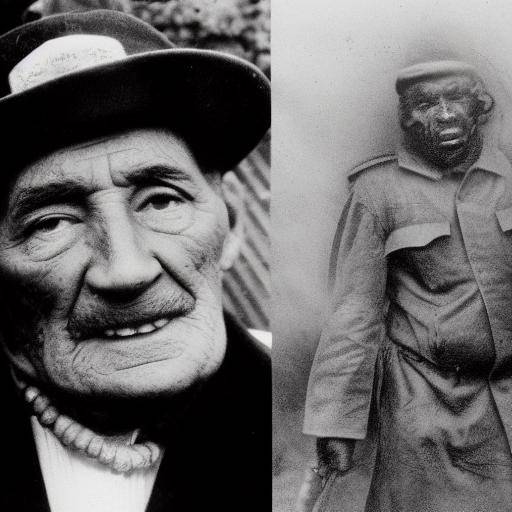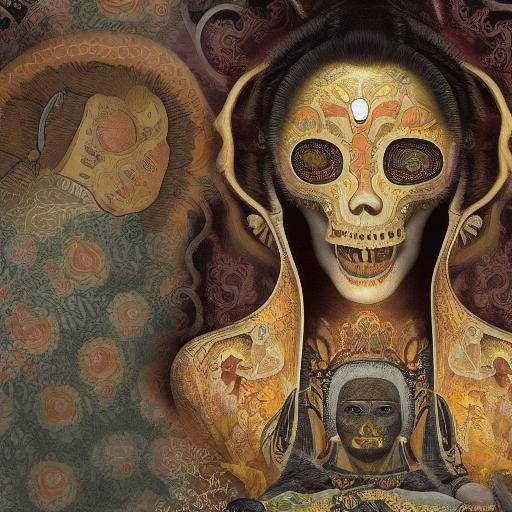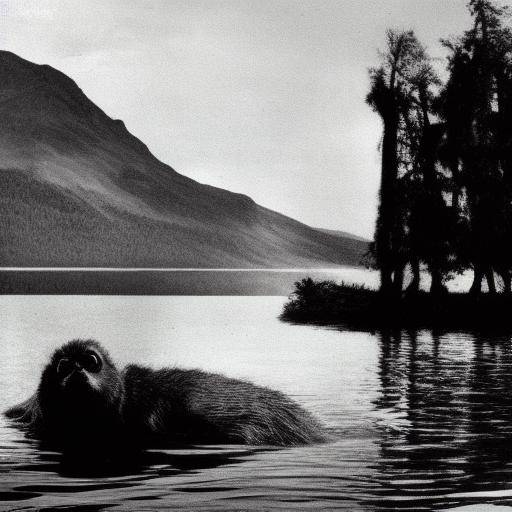
The Chupacabras is a figure that has sown fear in Latin America's popular imagination for decades. Known for their alleged cattle attack, their mysterious sightings have awakened curiosity and fear to the same extent. In this article, we will thoroughly explore the mystery surrounding the Chupacabras, from its beginnings to the current theories and sightings. Learn more about this legendary creature that has captured the imagination of many.
Introduction
The Chupacabras has been the subject of numerous urban legends and horror stories in Latin America. Described as a creature that attacks the cattle at night, their presence has haunted entire communities. From Puerto Rico to Mexico, the sightings of this mysterious beast have generated speculations and fears that are difficult to ignore. In this article, we will deepen in history, sightings and theories around the Chupacabras, unraveling the myth and reality around it.
History and Background
The origin of the Chupacabras myth dates back to the 1990s, when the first reports of mutilated cattle emerged in Puerto Rico. These reports described animal bodies with unusual bite marks and a significant loss of blood. From these events, the sighting stories programmed the arrival of the famous monster to the scene, rapidly spreading throughout Latin America.
The evolution of the Chupacabras myth has been shocking, with numerous assumptions about its appearance, behavior and origin. Despite the lack of solid scientific evidence, the stories of sightings and encounters have persisted, fueling the fascination and fear of this nocturnal creature. Over the years, the descriptions of the Chupacabras have varied, which has generated a diversity of theories about their nature and purpose.
Analysis in Deep
The mystery that surrounds the Chupacabras has sparked debates about its existence and its impact on rural communities. Although many sightings have been discredited as conventional predators, the stories persist, feeding the belief in the presence of this legendary creature. The lack of conclusive evidence has generated a fertile ground for theories ranging from paranormal to scientific.
The connection between the sightings of the Chupacabras and the mysterious activities in the cattle has led to thorough research and diverse speculation. Despite the absence of tangible evidence, the accounts of witnesses who claim to have seen the Chupacabras have kept alive the intrigue around this mysterious figure. As the stories continue to emerge, questions are raised about the exact nature of the Chupacabras and their impact on the rural communities of Latin America.
Comprehensive review
In exploring the testimonies of sightings in different regions, significant similarities and discrepancies have been highlighted, which has contributed to the complexity of the Chupacabras phenomenon. The interpretations of these accounts have varied according to culture, geography and individual perspective, which has enriched the narrative around this figure. As studies continue, questions are raised about the true nature of the Chupacabras and their relationship with rural communities.
Comparative analysis
The comparison between the reports of sightings of the Chupacabras, the theories about their origin and the effects on the cattle shed light on the complexities of this enigma. By closely examining narratives in different contexts, similarities and differences are highlighted that enrich the understanding of the Chupacabras phenomenon. Through these comparisons, there are fundamental reflections on the cultural, social and psychological implications of the presence of this legendary creature in Latin America.
Practical Tips and Accessible Recommendations
While the Chupacabras myth has raised fear and speculation, it is important to address the issue from a rational perspective. In the face of any incidence of mutilated livestock or suspicious behaviour, it is crucial to contact trained professionals in animal management and conservation. At the same time, it is essential to foster open and evidence-based dialogue to demystify the Chupacabras and address the concerns of rural communities.
Industry ideas and Insigths and Expert Reviews
The influence of the Chupacabras myth on popular culture and artistic representations has been significant, generating a wide range of interpretations and critical reflections. In addition, the trajectory of the Chupacabras legend has served as a starting point for deeper explorations of folklore, superstition and human psychology. The critical look of experts and researchers continues to enrich the debate around the Chupacabras, offering new perspectives and understandings about their cultural and social significance.
Case Studies and Applications in Real Life
The Chupacabras sighting stories have influenced a wide range of industries, from entertainment to scientific research. When analyzing specific cases, it is possible to examine how this legend has impacted decision-making, communication strategies and the perception of folklore in Latin America and beyond. These cases provide concrete experiences that reveal the scope and influence of the Chupacabras myth in different contexts.
Future Trends and Predictions
As the Chupacabras continues to capture the public's imagination, it is likely that its influence will persist in popular culture and collective psyche. Further research and exploration on the origin and sightings of the Chupacabras offer the promise to shed light on this persistently disturbing riddle. Future predictions on the evolution of the Chupacabras myth invite us to reflect on their continued impact and relevance in a constantly changing world.
Conclusion
The myth of the Chupacabras has resisted the proof of time, leaving a legacy of fear, speculation and curiosity in his wake. Although its real existence remains the subject of debate, its impact on popular culture and human psyche is undeniable. By thoroughly exploring the tales of the Chupacabras sightings, their connections with the cattle and the mystery that surrounds it, a door opens to the deeper understanding of folklore and deep-rooted beliefs in Latin America and beyond.
Frequently asked questions
What's the Chupacabras?
The Chupacabras is a legendary creature believed to attack cattle in Latin America, causing the death of animals with inexplicable bite marks and a considerable loss of blood.
What is the origin of the Chupacabras myth?
The Chupacabras myth originated in the 1990s in Puerto Rico, following reports of mutilated cattle and sightings of a mysterious creature.
Is there scientific evidence of the existence of the Chupacabras?
So far, there is no conclusive scientific evidence to support the existence of the Chupacabras, which has led to constant discussions about its authenticity.
What countries have Chupacabras sightings reported?
The Chupacabras sightings have been reported in several Latin American countries, including Puerto Rico, Mexico, the Dominican Republic and others.
What impact has the Chupacabras myth had on popular culture?
The myth of Chupacabras has permeated popular culture, leading to films, series, books and works of art that explore their mystery and impact on society.
What have we learned from the sightings of the Chupacabras and their connection to the cattle?
The sightings of the Chupacabras and their alleged attacks on cattle have generated a combination of fear, speculation and fascination. Despite the lack of conclusive evidence, these accounts have played a significant role in the popular culture and folklore of Latin America.
How should rural communities address reports of Chupacabras sightings?
It is crucial that rural communities address the Chupacabras sighting reports with a sensible and evidence-based approach. Working together with livestock and conservation experts is critical to mitigating fear and protecting the well-being of animals.
In short, the Chupacabras myth remains an enigmatic phenomenon that has captured the attention of millions in Latin America and beyond. Through the exploration of its history, the sightings and the theories surrounding it, it is possible to understand how this legendary creature has left an indelible mark on culture, the collective psyche and the popular imaginary.}"




